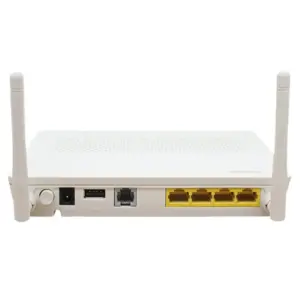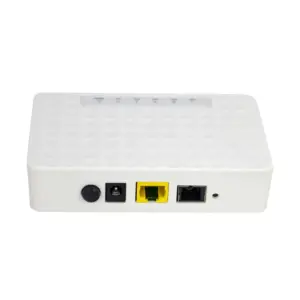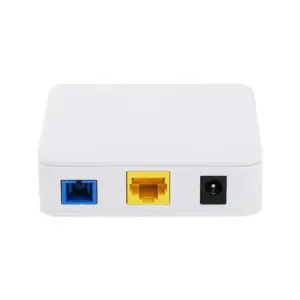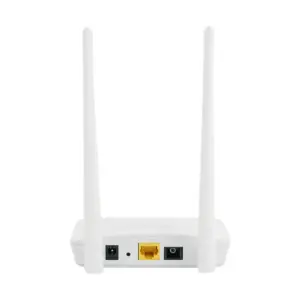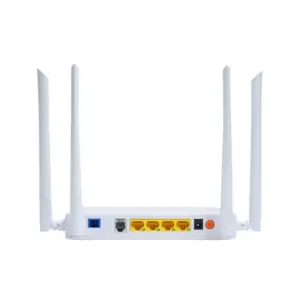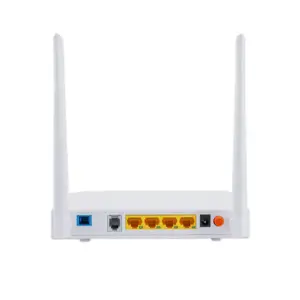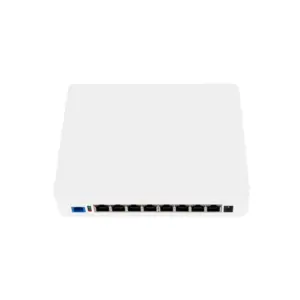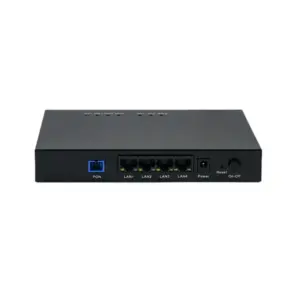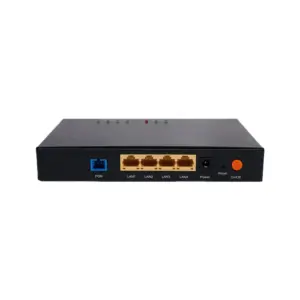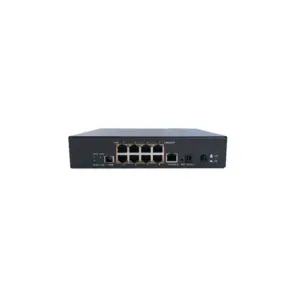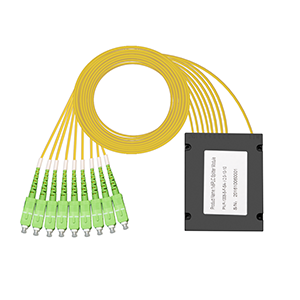Welcome to this blog, I will introduce you to the basic introduction, working principle, functions and characteristics, deployment and use, and future development trends of optical network terminals (ONT). Understand the role and importance of optical network terminals in fiber optic networks to help you understand its advantages and provide reliable solutions for your network connections.
I. Basic introduction to optical network terminals
Optical network terminal (ONT) is a key device in the optical fiber network, used to connect the terminal equipment of the user’s home or enterprise with the optical fiber network. The following is a basic introduction to optical network terminals:
-
Definition and role: Optical network terminal (ONT) is a client device in a fiber-to-the-user (FTTx) network. It is responsible for converting optical fiber signals into signals that can be used by terminal devices (such as computers, phones, TVs, etc.) electrical signals to achieve high-speed and stable optical fiber communications. The function of the ONT is to receive optical signals at the user end, analyze the optical signals, and then convert them into electrical signals for use by user equipment.
-
Status and function: In the optical fiber network, ONT is located in the last mile of the optical fiber access network, which is the terminal between the optical fiber and the user’s home or enterprise. It plays a key role in data transmission, responsible for converting fiber optic signals into signals that user devices can understand, allowing users to access services such as the Internet, telephone and television. ONT usually has multiple ports for connecting user equipment, such as Ethernet ports, phone ports, TV ports, etc., to meet the diverse needs of users.
The introduction of ONT enables optical fiber networks to be directly connected to users’ homes and businesses, providing higher-speed and more stable network connections, and providing users with more diverse network services.
II. Working principle of optical network terminal
The working principle of an optical network terminal (ONT) involves the reception, analysis and conversion of optical signals, as well as communication with an optical line terminal (OLT). The following is the working principle of optical network terminal:
-
Optical signal reception: The optical network terminal first receives the optical signal from the optical fiber. These optical signals are transmitted through optical fibers, carrying large amounts of data.
-
Analysis and conversion: The ONT contains a photoelectric converter inside, which is used to analyze the received optical signal. Opto-to-electrical converters convert optical signals into electrical signals, a process that typically includes demodulation and demultiplexing steps. Demodulation separates optical signals carrying different data, while demultiplexing recombines these separated data into a complete data stream.
-
Electrical signal output: After analysis and conversion, the electrical signal generated by the ONT is passed to the user equipment. ONT usually provides Ethernet ports, phone ports, TV ports, etc. to connect users’ computers, phones, TVs and other devices so that users can enjoy high-speed and stable network services.
-
Communication with OLT: ONT communicates bidirectionally with optical line terminals (OLT) through optical fibers. While providing services to user equipment, the ONT is also responsible for sending data requests from the user equipment to the OLT to achieve two-way communication between the user and the Internet.
During the entire process, communication between ONT and OLT is a key link in optical fiber transmission, ensuring high-speed, low-latency network connections. The working principle of ONT enables the optical fiber network to efficiently convert optical signals into electrical signals to achieve a seamless connection between the optical fiber network and user equipment.
III. Functions and characteristics of optical network terminals
Optical network terminal (ONT), as a key component of the optical fiber network, has the following main functions and characteristics:
-
Broadband access: Optical network terminals provide high-speed and stable broadband access services. Through optical fiber transmission, users can enjoy higher network bandwidth and faster data transmission speeds to meet the needs of various network applications, such as online videos, games, file downloads, etc.
-
Telephone service: Optical network terminals usually also provide telephone interfaces to support voice call services. Users can connect fixed phones or IP phones through optical network terminals to realize telephone communication functions.
-
TV services: For some optical network terminals, they may also provide TV signal access and transmission functions. Users can connect to TV boxes or smart TVs through optical network terminals to watch digital TV programs, video on demand and Internet TV.
-
Optical fiber conversion: Optical network terminal is an important conversion equipment between optical fiber signals and electrical signals. It is responsible for converting optical signals transmitted by optical fibers into electrical signals, and converting electrical signals into optical signals, thereby realizing the connection between the optical fiber network and user equipment.
-
Network management and monitoring: Optical network terminals usually have remote management and monitoring functions. Operators can monitor the operating status and network quality of optical network terminals through remote management systems, and handle network failures and user complaints in real time.
-
Security assurance: Optical network terminals use a variety of security mechanisms to ensure the security and privacy of user data, such as data encryption, firewalls, etc., to ensure that users’ communication and data transmission on the network are safe and reliable.
The functions and characteristics of optical network terminals make them play a vital role in home and enterprise networks. It not only provides high-speed and stable network access services, but also supports the deployment of multiple applications and services, meeting the diverse needs of users in broadband access, telephone communications, TV entertainment, etc.
IV. Deployment and use of optical network terminals
Deploying and using optical network terminals (ONTs) requires following a series of steps to ensure connection stability and performance. The following are the general steps for deploying and using ONT:
Deploy optical network terminal (ONT)
-
Choose an installation location: When selecting an installation location, the location of the fiber optic access point, the location of the power outlet, and network coverage requirements should be considered. Typically, ONTs are installed near a wall or fiber optic access box in a home or office.
-
Connecting optical fiber: Use optical fiber cables to connect the ONT to the optical fiber access box or optical fiber distributor. Make sure the connection is secure and inserted correctly.
-
Connect the power supply: Plug the ONT’s power adapter into the power socket, and connect the power cord to the ONT’s power interface.
-
Connecting user equipment: Use an Ethernet cable to connect the ONT to user equipment, such as a router, computer or other network device. Make sure the connection is correct and secure.
-
Start the ONT: Turn on the power switch of the ONT and wait for the ONT to start up. Usually, the indicator light of the ONT will show the connection status.
Use Optical Network Terminal (ONT)
-
Configure network parameters: Use a computer or other device to log in to the ONT management interface, and configure network parameters in the management interface, including IP address, subnet mask, gateway and other information.
-
Connect to the Internet: Make sure the connection between the ONT and the Internet is normal. You can visit the website through a browser to test whether the Internet connection is smooth.
-
Connect other devices: Connect other network devices such as routers, TV boxes, phones, etc. through the Ethernet port. Configure the network parameters of these devices as needed.
-
Test the connection: After completing the connection, conduct a network speed test and stability test to ensure that the network connection meets expectations and meets usage requirements.
-
Regular maintenance: Regularly check the connection status and indicator lights of the ONT to ensure that the connection is normal. Regularly update software and firmware to maintain the security and stability of ONT.
By following the above steps, users can successfully deploy and use optical network terminals to achieve stable and high-speed network connections.
V. Future development trends of optical network terminals
As one of the key components of optical fiber communication networks, the future development trend of optical network terminals (ONTs) is affected by many factors. The following are some possible development directions and potential roles:
-
Higher transmission rates: As network bandwidth requirements continue to grow, ONTs will support higher transmission rates in the future to meet the growing data demand. This may include support for higher-speed fiber optic interfaces and more advanced data processing technology.
-
Stronger intelligence and automation: Future ONTs may have stronger intelligence functions, able to automatically identify and optimize network connections, providing a better user experience. Through intelligent technology, ONT can better adapt to changes in the network environment and provide more stable and reliable services.
-
More compact design and lower power consumption: Future ONTs may adopt a more compact and energy-saving design to adapt to the increasingly popular green communication concept. By adopting advanced chip and material technologies, ONTs can achieve lower power consumption and smaller size, thereby reducing energy consumption and costs.
-
Wider application scenarios: As optical fiber communication technology continues to mature and become more popular, future ONTs may play a role in more application scenarios. In addition to home and enterprise networks, ONTs may play an important role in smart cities, industrial Internet and other fields, supporting more intelligent and interconnected applications.
-
Integration with 5G and IoT: Optical network terminals may be combined with 5G and IoT technologies to achieve wider network coverage and richer application scenarios. Through interconnection with 5G base stations and IoT devices, ONT can provide stronger network support for smart cities, smart transportation and other fields.
In general, the future development trend of optical network terminals will be intelligent, high-speed, energy-saving and diversified. These trends will promote the development of optical fiber communication networks and provide users with faster, more stable and smarter network connection services.
Summary:
Thank you for reading this blog and learning about optical network terminal (ONT). I hope this blog can help you understand the basic introduction, working principles, functions and characteristics of optical network terminals, and provide correct deployment and usage guidelines. Choose reliable optical network terminals to provide high-speed and stable solutions for your network connections and meet your diverse communication needs.
VI. Optical Network Terminal FAQ
An Optical Network Terminal (ONT) is a device used in fiber optic networks to terminate the optical signal and convert it into electrical signals that can be used by end-user devices. It is typically installed at the customer’s premises and serves as the interface between the fiber optic network and the customer’s equipment.
Optical Line Terminals (OLTs) are devices used in fiber optic networks on the service provider side. They are located in the central office or data center and serve as the aggregation point for multiple Optical Network Units (ONUs) or ONTs. OLTs manage the traffic from multiple ONUs and provide the connection to the wider network, usually through high-capacity transmission interfaces.
A router and an ONT serve different purposes in a network. An ONT is specifically designed for fiber optic networks and acts as the interface between the optical network and the customer’s equipment. It converts the optical signal to electrical signals that can be used by devices like computers, phones, or routers. A router, on the other hand, is a device that connects different networks together and routes data packets between them. It provides functions like network addressing, packet forwarding, and network security.
An ONT and a modem are similar in the sense that they both facilitate connectivity between a network and the customer’s equipment. However, they are used in different types of networks. An ONT is used in fiber optic networks, whereas a modem is typically used in traditional copper-based networks, such as DSL or cable networks. The ONT converts the optical signal into electrical signals, while a modem converts signals for transmission over copper-based lines.
You will need an Optical Network Terminal (ONT) if you are subscribing to a fiber optic internet service. The ONT is necessary to convert the optical signal from the service provider’s network into electrical signals that can be used by your devices. It serves as the connection point between the fiber optic network and your equipment, such as computers, routers, or phones.
The ONT cable and Ethernet are not the same, although they can be used together. The ONT cable refers to the cable that carries the optical signal from the service provider’s network to the ONT device at the customer’s premises. Ethernet, on the other hand, is a networking technology used for transmitting data packets over local area networks (LANs). Ethernet cables are commonly used to connect devices to the ONT or other networking equipment to establish a local network connection.
The installation of an Optical Network Terminal (ONT) may vary depending on the service provider and the specific setup. Typically, a technician from the service provider will install the ONT at the customer’s premises. The installation involves connecting the fiber optic cable to the ONT, configuring the necessary settings, and connecting the customer’s equipment, such as routers or computers, to the ONT. The technician will ensure the proper functioning of the ONT and establish the internet connection.
The size of an Optical Network Terminal (ONT) can vary depending on the specific model and manufacturer. ONTs are generally compact devices designed for easy installation at the customer’s premises. They are typically smaller than traditional modems or routers and can range in size from a small box to a larger unit, depending on the features and capabilities of the ONT.
An ONT (Optical Network Terminal) and an OLT (Optical Line Terminal) are both devices used in fiber optic networks, but they serve different purposes. An ONT is installed at the customer’s premises and acts as the interface between the fiber optic network and the customer’s equipment, converting the optical signal into electrical signals. An OLT, on the other hand, is typically located at the service provider’s central office or data center. It serves as the aggregation point for multiple ONTs or ONUs (Optical Network Units) and manages the traffic from these devices, connecting them to the wider network.

